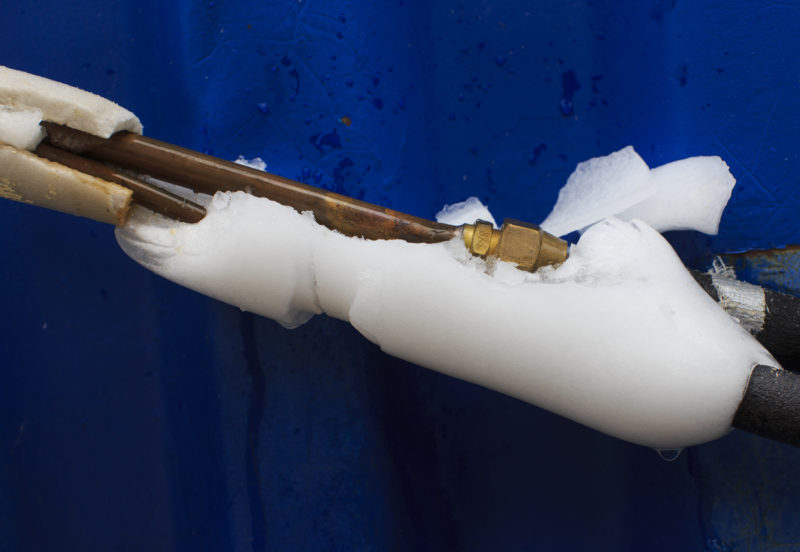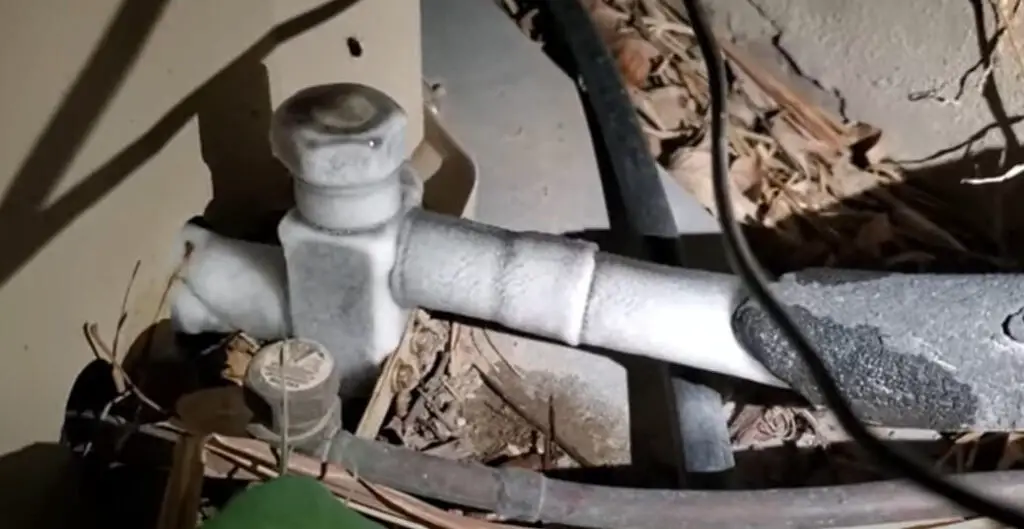We have come across this article relating to What Causes AC Pipes To Freeze? listed below on the internet and decided it made good sense to write about it with you over here.

Intro
Discovering that your air conditioning pipeline is iced up can be worrying, especially during hot summer season when you rely upon your a/c unit the most. Comprehending what to do in such a circumstance is essential to prevent further damages to your air conditioning system and guarantee your convenience inside your home.
Comprehending the Causes
Several factors can add to the cold of an air conditioning pipe. Understanding these reasons can assist you deal with the problem properly.
Absence of Airflow
One common source of a frozen AC pipeline is inadequate airflow. When the air flow over the evaporator coil is limited, it can trigger the coil to go down below freezing temperature, bring about ice formation on the pipeline.
Low Refrigerant Levels
Inadequate cooling agent levels in your a/c system can additionally lead to an icy pipe. Low refrigerant levels can create the pressure in the system to drop, resulting in the freezing of dampness on the evaporator coil.
Winter Conditions
In cooler climates, freezing temperature levels outside can add to the cold of air conditioning pipes. If your air conditioning system is not effectively shielded or if there are leakages in the ductwork, cool air can penetrate the system, triggering the pipeline to freeze.
Dirty Air Filters
Dirty or clogged air filters can restrict air movement in your air conditioner system, causing different issues, consisting of an icy pipe. It's essential to change or clean your air filterings system regularly to make sure proper air movement and avoid ice build-up.
Indications of a Frozen Air Conditioner Pipe
Acknowledging the indicators of a frozen a/c pipeline is vital for prompt action.
Lowered Airflow
If you notice a considerable decline in airflow from your vents, it could suggest an icy pipe.
Ice Buildup on the Pipe
Visible ice buildup on the refrigerant line or the evaporator coil is a clear sign of an icy air conditioner pipeline.
Strange Sounds from the Unit
Uncommon sounds, such as hissing or gurgling, coming from your air conditioner unit can indicate that there's ice existing on the pipe.
Immediate Actions to Take
When confronted with a frozen air conditioning pipe, it's vital to act rapidly to avoid additional damages to your air conditioning system.
Shutting off the a/c
The very first step is to shut off your a/c unit to avoid the system from running and worsening the problem.
Checking for Blockages
Examine the area around the interior device for any kind of blockages that may be blocking air movement, such as furnishings or curtains.
Thawing the Pipe
You can make use of mild techniques like putting towels taken in warm water around the frozen pipe to help thaw it gradually.
Preventive Measures
Taking preventive measures can assist avoid future events of an icy AC pipeline.
Regular Maintenance Checks
Set up regular maintenance checks with a professional HVAC professional to make certain that your air conditioner system is running efficiently.
Transforming Air Filters
On a regular basis change or cleanse your air filters to stop airflow constraints and preserve ideal performance.
Shielding Exposed Pipes
If your air conditioning pipelines are exposed to cool temperature levels, consider protecting them to avoid cold throughout cold weather.
Seeking Professional Help
If DIY approaches stop working to deal with the problem or if you're not sure regarding just how to continue, it's finest to look for support from a qualified HVAC specialist.
When DIY Methods Fail
If your attempts to thaw the pipe or address various other issues are not successful, it's time to call an expert.
Importance of Hiring a Professional HVAC Technician
A licensed HVAC technician has the expertise and tools needed to diagnose and repair problems with your a/c system securely and efficiently.
Final thought
Managing an icy a/c pipe can be a frustrating experience, however recognizing just how to react can aid reduce damages and restore convenience to your home. By recognizing the reasons, acknowledging the indications, and taking timely activity, you can effectively deal with the problem and stop future occurrences.
G UP? HOW TO FIX IT?
It happens all over America. And the rest of the world probably. It’s the hottest day ever and for some darn reason your AC isn’t cooling the house. You fiddle with the thermostat to try and fix the problem. Nada. All you can do now is go outside and check the AC unit. You make your way there and find your air conditioner unit is frozen! But how?
In this post we’ll cover how you can tell that your air conditioner has frozen (other than the obvious reasons), what could have caused the freeze, and some of the things you can do about your AC freezing up. And if you have a frozen heat pump condenser, read our blog about it to learn what to do! But remember, it is always best to avoid your AC freezing up with an AC tune up. And if you are moving into a home, it's critical to get HVAC inspection so that you are aware of an AC problems before you move in.
Keep reading and you may be able to fix the frozen AC yourself. If you can’t, call an HVAC specialist. If you live in Maryland, call SuperTech HVAC for AC repair. We’ll take care of it.
How Does An Air Conditioning Unit Work?
How you probably imagine an AC works is wrong. Contrary to popular belief, an AC system does not inject cool air into a building. Instead, it removes the heat from inside and transfers it outside. Cool huh? (Pun intended).There are 4 major components among the 3 stations of an air conditioning system: the evaporator coil, the compressor, the condenser, and the refrigerant – a special chemical that links everything together through a closed loop system.
Station 1:
Warm indoor air is sucked into the return vent, through a filter, and blows over the evaporator coil. The heat is absorbed into the cold refrigerant, turning it from liquid to gas. The air, which is now cool, is blown back into the home to areas that your thermostat, i.e. you, has decided.
Station 2:
The refrigerant makes its way outside the house to the compressor, which squeezes the warm refrigerant, raising its gaseous temperature even more.
Station 3:
When the super hot vapor refrigerant reaches the condenser, the last step, the heat is expelled and absorbed into the outdoor air. The refrigerant instantly cools, which changes it from gas back to liquid form. The cold liquid refrigerant is now ready to return to station 1 and repeat the process.
Is Your AC Freezing Up? Here Are The Signs:
As you may have guessed, your air conditioner unit freezing up on a hot day is not normal.
If this happens, there's no need to panic. Often the issue can be solved with a little troubleshooting. If the AC unit is left frozen for too long however, you may find yourself with a bigger problem.
First things first, how do you know your AC is frozen?
Well, the obvious sign is the ice on your refrigerant line-set pipe. Simply check between your outdoor AC unit and your home's exterior wall to see whether your AC line frozen.
You might also have a frozen evaporator coil. This one's not as easy to check. You'll need to open a panel on the indoor unit to inspect. Don't do this unless you're handy. If you aren't, call an HVAC pro like SuperTech HVAC or you may damage something in the process.

We were shown that report about Air Conditioner Frozen? How To Fix your Frozen AC Line from a good friend on our other domain. Do you know about somebody else who is truly interested in the niche? Do not hesitate to promote it. We recognize the value of reading our article about How can I fix an air conditioner’s frozen pipe?.
Call Today